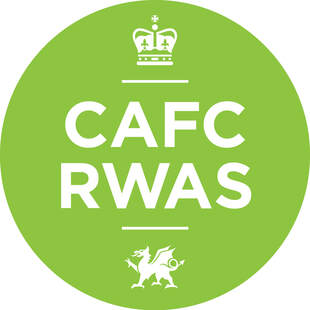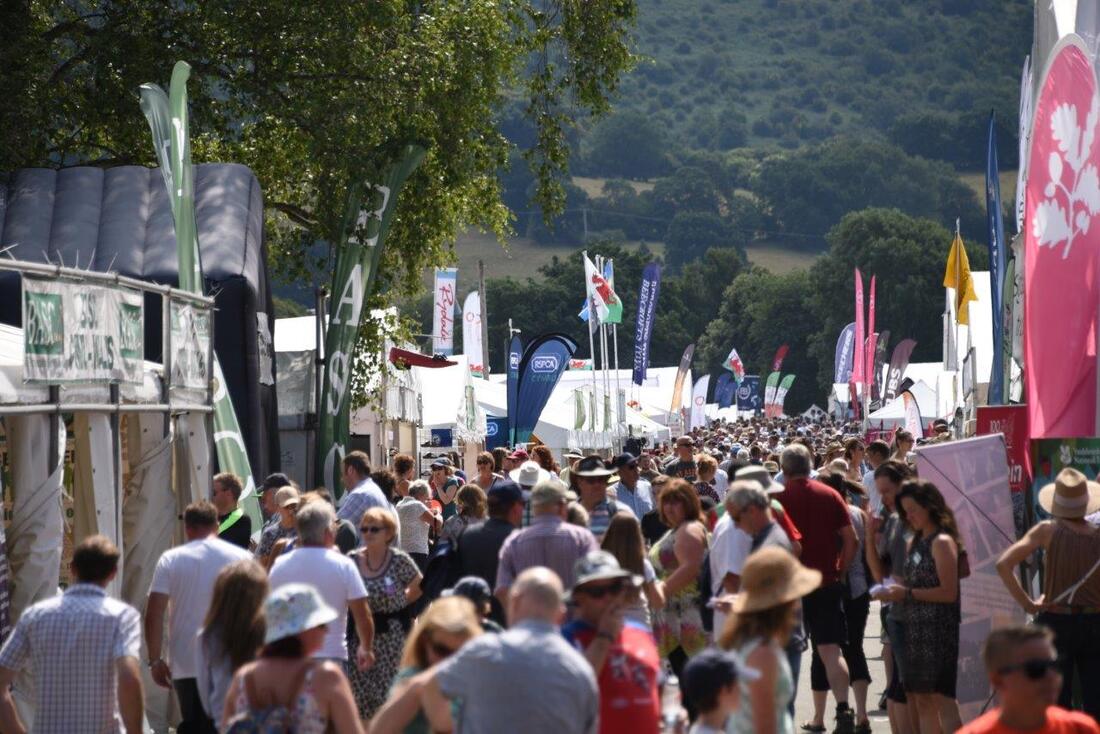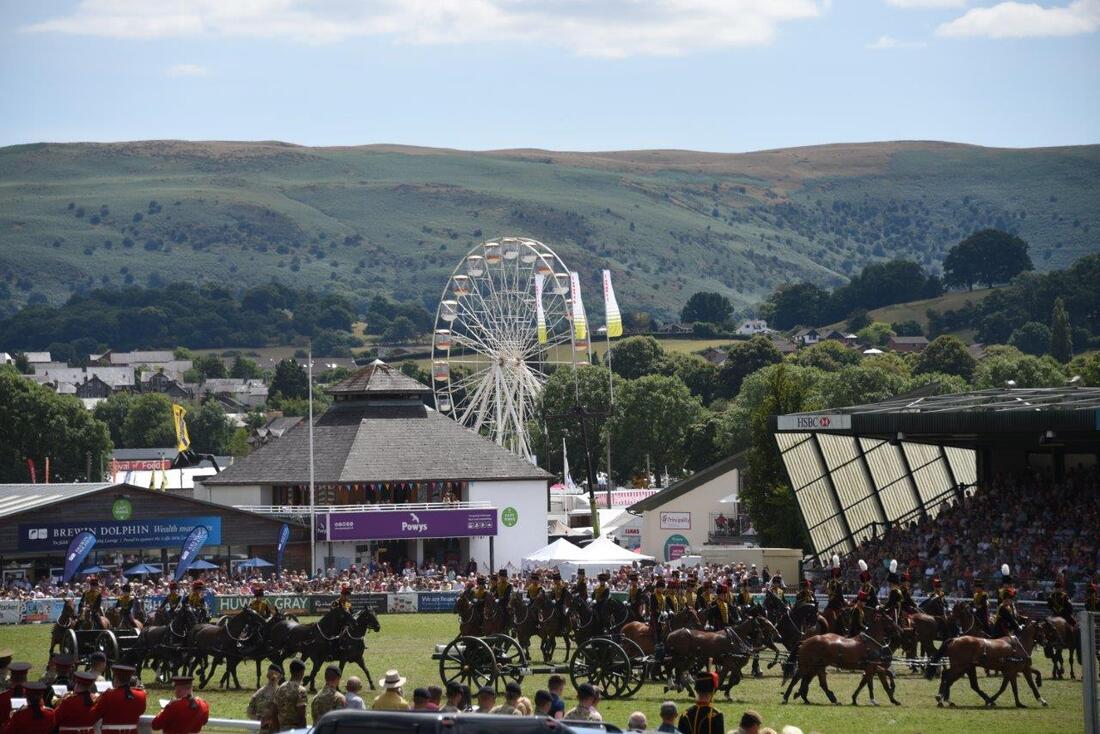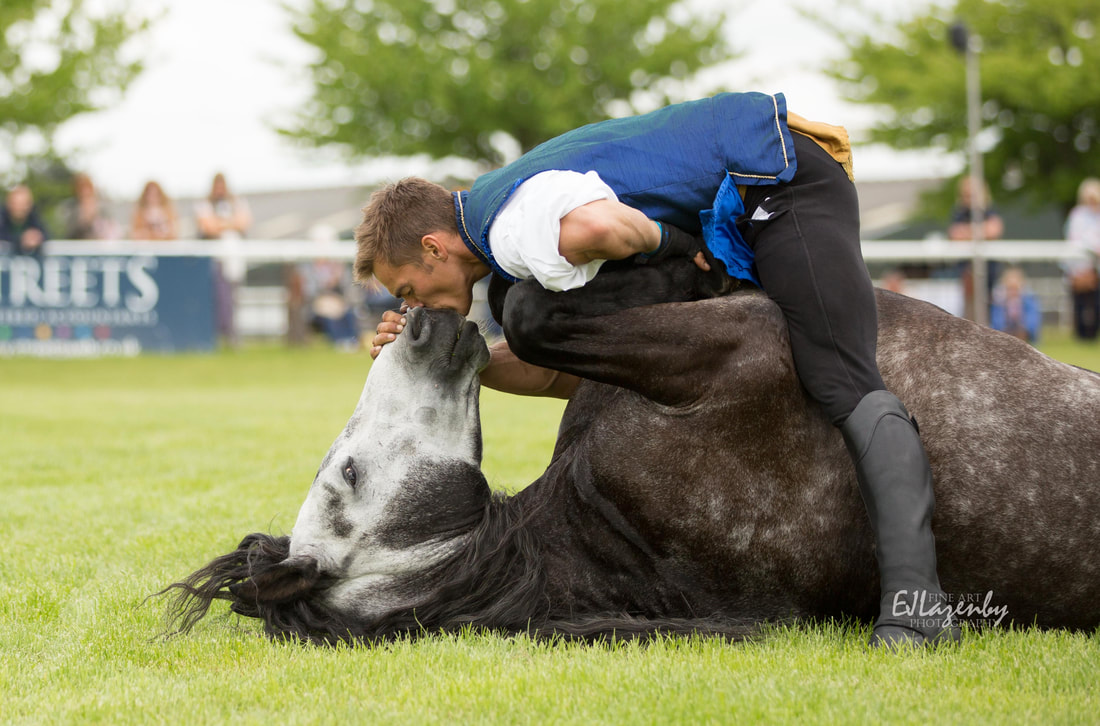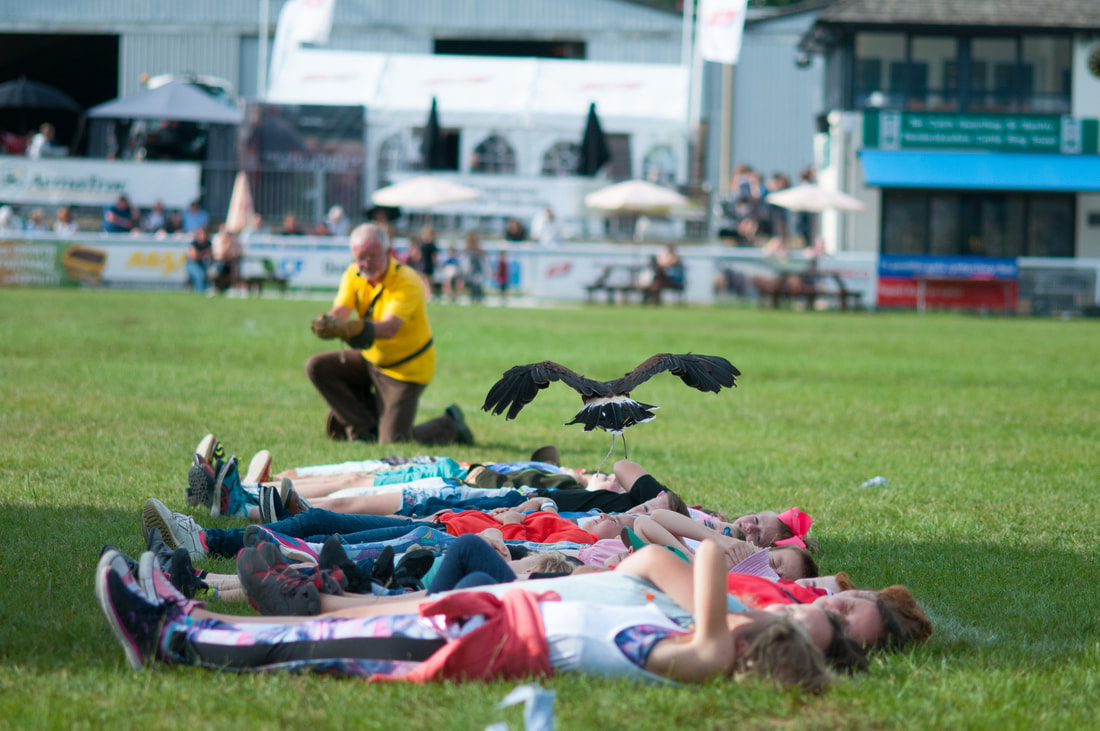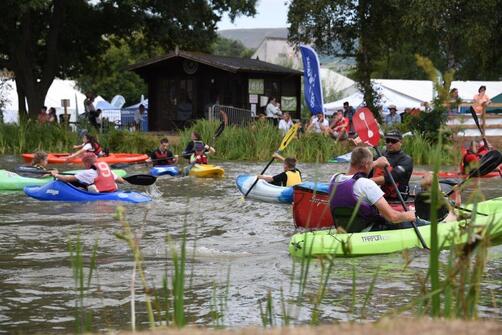Introduction to the Royal Welsh Agricultural Society
|
The Royal Welsh Agricultural Society has played a leading role in the development of agriculture and the rural economy in Wales for over a century since its formation in 1904.
Today our work as a charity includes providing support for business, social welfare and education in rural communities, and the organisation and staging of our ever-popular society events; the Smallholding and Countryside Festival, the Royal Welsh Show and the Winter Fair. As well as its principal function of showcasing the cream of Welsh livestock and the high quality food and drink produced in Wales, the society events encompass the wider spectrum of farming and rural life and successfully bridges the gap between town and country. The Royal Welsh Show, in particular provides something to interest everyone through its kaleidoscopic range of activities including forestry, horticulture, crafts, countryside sports, and a 12-hour programme of exciting entertainment that continues throughout each of the four days of the event. |
Not only is the event enjoyed by the thousands of competitors, exhibitors and visitors who attend year on year, it is also becoming an important place to conduct business and discuss politics. With scores of dignitaries and high-profile decision makers coming together, the show provides an international platform to facilitate discussions affecting the future of Welsh agriculture and the rural economy between some very influential individuals and organisations.
Despite the society forming back in 1904, we have not been able to hold a show every single year. The show was cancelled during both world wars, in 1948 due to petrol rationing and most recently, in 2001 due to the Foot and Mouth outbreak. As a result, we are very excited to be holding our 100th show this year!
Throughout the four days there will be a number of commemorative celebrations to mark this milestone in the show’s history. These include hosting a wedding for one lucky couple during the first day of the event, a farming through the ages display in our main ring each day, and an awe-inspiring Supreme Champion of Champions class, which will see horses, cattle, sheep, goats and pigs all competing for this one-off 100th Royal Welsh Show title.
This year’s Royal Welsh Show will be held at the showground in Llanelwedd on 22 – 25 July 2019.
Despite the society forming back in 1904, we have not been able to hold a show every single year. The show was cancelled during both world wars, in 1948 due to petrol rationing and most recently, in 2001 due to the Foot and Mouth outbreak. As a result, we are very excited to be holding our 100th show this year!
Throughout the four days there will be a number of commemorative celebrations to mark this milestone in the show’s history. These include hosting a wedding for one lucky couple during the first day of the event, a farming through the ages display in our main ring each day, and an awe-inspiring Supreme Champion of Champions class, which will see horses, cattle, sheep, goats and pigs all competing for this one-off 100th Royal Welsh Show title.
This year’s Royal Welsh Show will be held at the showground in Llanelwedd on 22 – 25 July 2019.
RWAS in the Spotlight
1) We are delighted that you are sponsoring the Mid Wales Tourism Awards 19/20. What drew you to these awards?
Although an agricultural show at heart, the events organised and staged at the showground are very much a tourism attraction, with the link between tourism and agriculture becoming more widely understood.
Albeit a Welsh institution, the Royal Welsh can often be taken‐for‐granted or underestimated as one of Wales’s major tourism destinations. Promoting the objectives of the society, the events we organise and host and the showground as a venue is very important to us.
The Royal Welsh is far more than just a show and, as a society, we take the responsibility of our powerful brand very seriously. For the show alone, the estimated value to the mid-wales region exceeds £20m and makes the showground a unique rural economy hotspot.
Following substantial investment in the site, the improved broadband and mobile phone connectivity, along with the different venue hire options, has ensured that this idyllic venue is now seen as an event destination attracting more and more events, all benefiting the tourism of the local area and beyond. We are very proud of the positive impact our society’s work has on the tourism of mid-wales.
The Mid Wales Tourism Awards is an excellent way of celebrating and recognising local tourism businesses and what a huge impact they have on the economy and attraction of Mid Wales.
|
2) Please tell us a bit about the Royal Welsh Agricultural Society and how has it evolved over the years?
The Royal Welsh Agricultural Society was established originally as the Welsh National Agricultural Society in 1904. The society’s royal connections go back to 1907 when, three years after the foundation of the society, King George V became patron, followed by King George VI in 1936. The Queen took over the role in 1952 and remains our patron to this day. The early aims of the newly formed society were to improve the breeding of stock and encourage agriculture throughout Wales. For the first half of the last century, the show moved between sites each year, alternating between North and South Wales. It wasn’t until 1963 that the show and society offices moved to its current, permanent site in Llanelwedd. |
The first show at Aberystwyth attracted 442 livestock entries. Four years later, in 1908, 23 special trains comprising 224 cattle trucks and horse-boxes arrived at Aberystwyth together with 100 passenger coaches ferrying visitors from far and wide to the show.
Nowadays, livestock entries number around 8,000 and 20,000 cars a day plus hundreds of stock lorries and trailers converge on the showground in Mid Wales for the annual four-day event which has grown into one of the most popular agricultural shows in Britain.
Today, the society is a national institution loved throughout Wales and beyond, not only by farmers and the rural community but by people from all walks of life, many of whom have come to regard the Royal Welsh Show as the highlight of their year.
The society’s charitable objectives are:
Nowadays, livestock entries number around 8,000 and 20,000 cars a day plus hundreds of stock lorries and trailers converge on the showground in Mid Wales for the annual four-day event which has grown into one of the most popular agricultural shows in Britain.
Today, the society is a national institution loved throughout Wales and beyond, not only by farmers and the rural community but by people from all walks of life, many of whom have come to regard the Royal Welsh Show as the highlight of their year.
The society’s charitable objectives are:
- to promote sustainable agriculture, horticulture, forestry, conservation and the environment and in particular in Wales;
- to encourage and promote agricultural science, research and education in particular in relation to food, farming and the countryside;
- to promote the improvement of livestock, the welfare of animals and the prevention and eradication of diseases in animals useful to man;
- to hold demonstrations of modern agricultural methods, technology and processes;
- to hold shows for the exhibition of livestock, poultry, farm and horticultural produce and forestry, and for the demonstration of agricultural methods, machinery and modern technology and hold events of an ancillary nature;
- to promote and advance for the benefit and education of the public the conservation protection and improvement of the physical and natural environment; and
- to promote rural arts, culture and heritage.

